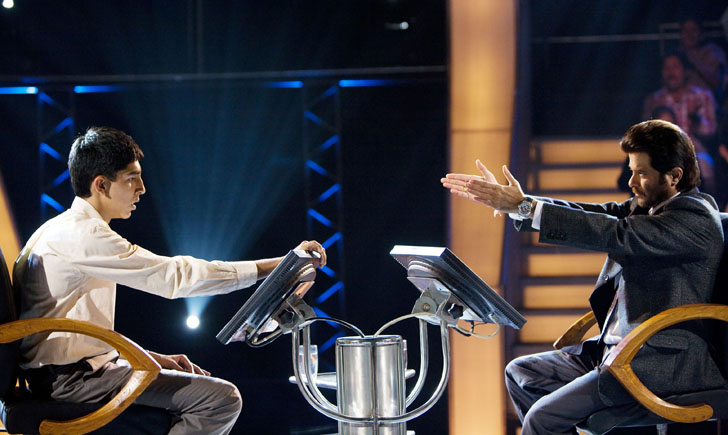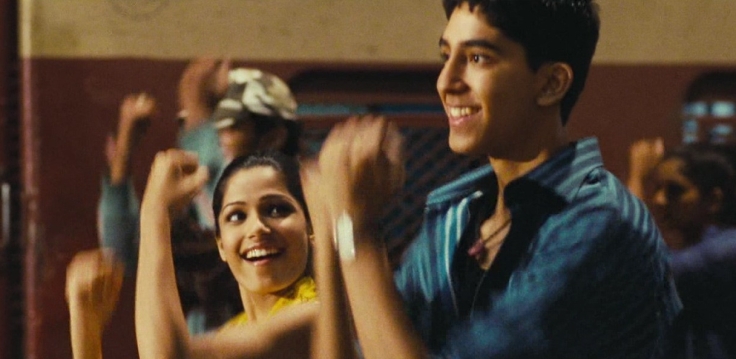Original US release date: November 12, 2008
Production budget: $15,000,000
Worldwide gross: $377,910,544
For the second time in three weeks, we have an Academy Award Best Picture winner as the focus of #ThrowbackThursday. Two weeks ago, I featured the 2007 winner in Martin Scorsese’s The Departed. This week’s featured film, Danny Boyle’s Slumdog Millionaire won the trophy at the 2009 ceremony. In fact, it won a massive eight Oscars after being nominated for ten. And looking above at that worldwide gross-to-production budget ratio reminds us that the film was not only a critical success, but it found an audience and was a massive smash at the box office, as well. So what made this film so unusually resonant with the professionals and the general audience, alike?
The film tells the story of Jamal (Dev Patel), an Indian teenager who is currently in the hot seat of his country’s version of “Who Wants to be a Millionaire?”. He is one question away from winning the jackpot of twenty million rupees when the episode ends, forcing him to wait overnight until the next day’s live broadcast in order to finish his stint on the show. As that night’s episode concludes, Jamal is arrested by Indian police upon suspicion of cheating the show. What follows is his recounting of the questions he has correctly answered, so far, and his explanations as to how a poor, uneducated street kid could possibly know the answers. As this transpires, Jamal simply hopes to be released so he can finish the game. But is it really the money that Jamal is after or does he have another goal in mind?

As stated, the film was a remarkable success both in North America and around the world. For those who either don’t remember or who weren’t around at the time, when “Who Wants to be a Millionaire?” debuted, it wasn’t only a success, but it was the talk of television – at least in America. The game show originated in Britain in 1998 and was then adapted for American television in August of 1999 with famed television personality Regis Philbin as host. It was the single highest-rated show in all of television for the 1999-2000 season and became a legitimate pop culture phenomenon.
It’s no secret that general American moviegoing audiences aren’t especially receptive to films that aren’t firmly entrenched in their own culture, or at least a culture that is represented commonly enough in popular media that it feels familiar to them. In 2008, Indian culture was not among those that most Americans were familiar with, so the inclusion of “Who Wants to be a Millionaire?” as the framework of the story undeniably made Americans feel a little more at ease and contributes to the film earning a whopping $141 million in North America, alone. And before you argue that point, ask yourself (and answer honestly) if the film would have been the same sensation in America had it simply been the story of Jamal growing up in India without the added attraction of appearing on the game show. By comparison, 2016’s Lion, which was my favorite movie of that year and also starred Dev Patel (find that review here), was at least as good as – and in my opinion, superior to – this film and only managed to gross a little over $51 million in North America. That was still a success, but my point stands.

The film also concludes with a memorable Bollywood dance sequence over the closing credits. I could be wrong, but to my knowledge and recollection, this was the first dance sequence of this kind in any major American release and that sequence alone managed to raise the film’s profile and get audiences talking. It helped to send viewers home in a good mood with uplifted spirits, which in turn improved word of mouth. Boyle and company also succeeded in using the film to substantially raise American awareness of modern Indian culture. I’m not saying that this one movie served as an introduction to the culture for Americans; that would be silly. But it certainly contributed to the globalization of Indian culture and reached a younger generation that had largely gone previously untapped, meaning that Slumdog Millionaire was more than a financially accomplished, award-winning work, but also an important touchstone for many in relation to their exposure to this region of the world – both the good and the bad.
As far as the film itself is concerned, Boyle uses the “Millionaire” backdrop effectively as the skeletal structure to support the real narrative, which essentially is a long-form conveyance of “you live and you learn”. Jamal (played at various stages of his life by Tanay Chheda and Ayush Mahesh Khedekar in addition to Patel) experiences a very tumultuous childhood alongside his brother Salim (from youngest to oldest: Azharuddin Mohammed Ismail, Ashutosh Lobo Gajiwala, and Madhur Mittal). They eventually meet Latika (Freida Pinto, Tanvi Ganesh Lonkar, and Rubina Ali), who bonds with Jamal before they become separated. Each flashback chapter of Jamal’s life is followed by the next question in Jamal’s quest for twenty million rupees, striking a good balance for the audience and assisting with the film’s pacing.

It had been quite a while since I had watched the movie and one aspect I didn’t remember particularly well was Anil Kapoor’s performance as the host of “Millionaire”. I love game shows. I watch a lot of game shows. And I have to believe that, prior to filming this movie, Kapoor had never watched a single one. His delivery, expressions, body language, mannerisms, and acting choices in general don’t even come close to coinciding with any game show host I’ve ever seen. His performance severely cripples the feeling of authenticity for the game show sequences, taking me completely out of the film nearly every time he says or does anything, at all. The other performances are fine (Patel and Pinto both went on to have successful careers), but Kapoor’s actually damages the film. I have to imagine Boyle realized this too late and just had to make the best of what he had.
Despite that, Slumdog Millionaire is a film that hammers home the message that one should never give up and that life is best experienced by . . . well . . . living it. The movie unquestionably broke through cultural barriers to resonate with people the entire world over, and for that, Boyle and everyone involved (except Kapoor) should be proud. One decade after its release, its importance and lasting impact cannot be denied, nor could it have been predicted at the time. Not only did the story offer up some sage advice for people of any origin, but it reintroduced the softer side of a people to many who had either never known them as such or had perhaps sadly forgotten them in that way, addressing Islamophobia without even referencing terrorism. This speaks to the power of art – as long as it manages to reach an audience. Slumdog Millionaire did just that and still stands today as one of the most relevant films of the past twenty years.
Like us on Facebook! And phone a friend and share!


Leave a comment